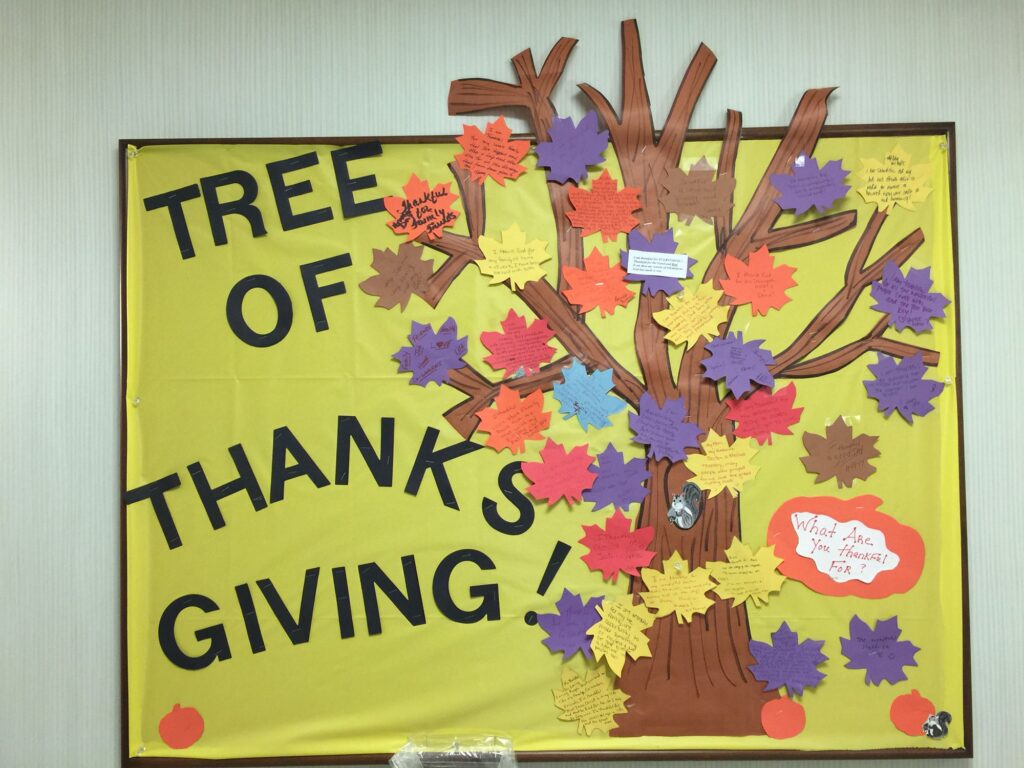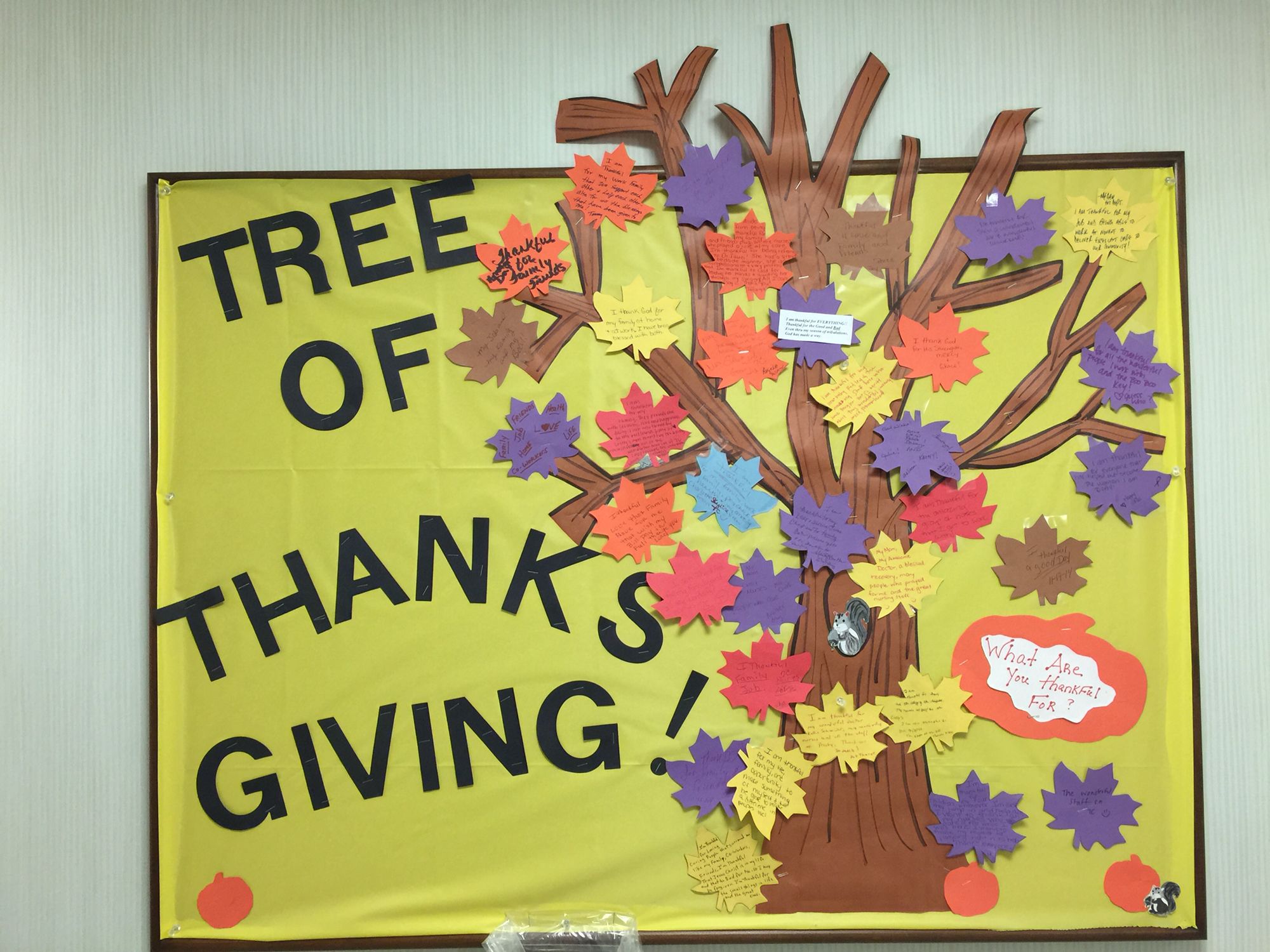
The Thankful Tree: A Symbol of Gratitude and Community
In an era often dominated by negativity and division, the concept of a “thankful tree” offers a refreshing and unifying alternative. A thankful tree, whether a real tree adorned with handwritten notes or a crafted representation, serves as a visual reminder to appreciate the good things in our lives and foster a sense of community. This simple yet powerful tradition has gained traction in various settings, from homes and classrooms to workplaces and public spaces, promoting mindfulness and gratitude.
The Origins and Evolution of the Thankful Tree
The precise origins of the thankful tree are difficult to pinpoint, as the idea likely evolved organically from various cultural practices centered around gratitude and reflection. The concept shares similarities with traditions like gratitude journals and communal gratitude circles, where individuals express their appreciation for positive aspects of their lives. The thankful tree simply provides a more tangible and visually engaging way to share and celebrate these sentiments.
Initially, thankful trees were often associated with Thanksgiving celebrations, serving as a centerpiece for families to express their gratitude during the holiday season. However, the practice has expanded beyond this specific holiday, becoming a year-round activity for fostering a positive mindset and strengthening social bonds. The versatility of the thankful tree allows it to be adapted to various contexts and preferences, contributing to its widespread appeal.
Creating Your Own Thankful Tree
One of the most appealing aspects of the thankful tree is its simplicity and accessibility. Creating your own thankful tree requires minimal resources and can be a fun and engaging activity for people of all ages. Here’s a step-by-step guide to get you started:
Choosing Your Tree
The first step is to select the “tree” itself. This could be a real tree branch placed in a vase, a small potted plant, a drawing or painting of a tree, or even a constructed tree made from craft materials like paper or felt. The choice depends on your available resources, space constraints, and personal preferences. A real branch offers a natural and rustic aesthetic, while a crafted tree allows for greater customization and creativity.
Preparing the Gratitude Notes
Next, you’ll need to prepare the materials for writing and attaching the gratitude notes. Cut out small pieces of paper or cardstock in various shapes and colors. Provide pens, markers, or crayons for writing. You may also want to include string, ribbon, or paper clips for attaching the notes to the tree.
Inviting Participation
Once you have your tree and materials ready, invite others to participate in the activity. Explain the concept of the thankful tree and encourage them to write down things they are grateful for on the provided notes. This could include anything from simple everyday blessings to significant achievements or relationships. Emphasize that there are no right or wrong answers, and that the goal is simply to reflect on and express appreciation for the positive aspects of their lives.
Adding the Notes to the Tree
As people write their gratitude notes, encourage them to attach them to the tree. This creates a visual representation of the collective gratitude within the group or community. Over time, the tree will become increasingly adorned with notes, serving as a powerful reminder of the abundance of blessings in our lives. Consider placing the thankful tree in a prominent location where it can be easily seen and appreciated by everyone.
The Benefits of Cultivating Gratitude
The thankful tree is more than just a decorative object; it’s a tool for cultivating gratitude, which has been shown to have numerous psychological and social benefits. Studies have consistently demonstrated that practicing gratitude can lead to increased happiness, reduced stress, improved sleep, and stronger relationships. By regularly focusing on the positive aspects of our lives, we can shift our perspective and develop a more optimistic outlook.
Furthermore, expressing gratitude can enhance our sense of connection to others. When we acknowledge and appreciate the kindness and support we receive from others, we strengthen our social bonds and foster a sense of belonging. The thankful tree provides a communal space for sharing these expressions of gratitude, creating a more positive and supportive environment for everyone involved.
Thankful Trees in Different Settings
The versatility of the thankful tree allows it to be adapted to various settings, each with its unique purpose and benefits:
At Home
A thankful tree at home can be a wonderful way to foster gratitude within the family. It can be a daily or weekly activity where family members share what they are thankful for, promoting a more positive and appreciative atmosphere in the home. It’s a great way to teach children about the importance of gratitude and to encourage them to focus on the good things in their lives. [See also: Family Gratitude Activities]
In the Classroom
In the classroom, a thankful tree can be used as a tool for teaching social-emotional skills such as empathy, gratitude, and mindfulness. It can also be incorporated into lessons on history, literature, or current events, encouraging students to reflect on the positive aspects of these topics. The thankful tree can also be a great way to build classroom community and promote a positive learning environment. [See also: Social Emotional Learning in Schools]
In the Workplace
In the workplace, a thankful tree can be used to boost morale, improve employee engagement, and foster a more positive work environment. It can be a way for employees to express their appreciation for their colleagues, their work, and the company as a whole. This can lead to increased productivity, reduced stress, and improved teamwork. [See also: Employee Engagement Strategies]
In Public Spaces
In public spaces, a thankful tree can serve as a community art project, bringing people together and fostering a sense of connection. It can also be a way to raise awareness about important social issues or to celebrate local heroes. The thankful tree can be a powerful symbol of hope and gratitude, reminding people of the good things in their community and in the world. [See also: Community Art Projects]
Overcoming Challenges and Maintaining Momentum
While the concept of a thankful tree is relatively simple, there may be challenges in maintaining momentum and ensuring continued participation. Here are some tips for overcoming these challenges:
- Make it a routine: Incorporate the thankful tree into your daily or weekly routine to make it a consistent practice.
- Lead by example: Share your own expressions of gratitude to encourage others to participate.
- Keep it fresh: Vary the prompts or themes to keep the activity engaging and avoid repetition.
- Celebrate milestones: Acknowledge and celebrate the growth of the thankful tree and the collective gratitude it represents.
- Promote the benefits: Remind participants of the positive impacts of gratitude on their well-being and relationships.
The Thankful Tree: A Lasting Legacy
The thankful tree is more than just a passing trend; it’s a timeless tradition that can have a lasting impact on individuals, families, and communities. By cultivating gratitude, we can improve our own well-being, strengthen our relationships, and create a more positive and compassionate world. Whether you choose to create a simple tree branch adorned with handwritten notes or a more elaborate display, the thankful tree serves as a powerful reminder to appreciate the good things in our lives and to share that appreciation with others. It’s a symbol of hope, gratitude, and community, reminding us that even in the face of adversity, there is always something to be thankful for. The act of creating a thankful tree and consistently adding to it reinforces the practice of acknowledging and appreciating the positive aspects of life, leading to a more optimistic and fulfilling existence. Embrace the thankful tree and cultivate a culture of gratitude in your life and the lives of those around you. It’s a gift that keeps on giving.

